Visva Bharati’s Kala Bhavan celebrates 100 years!
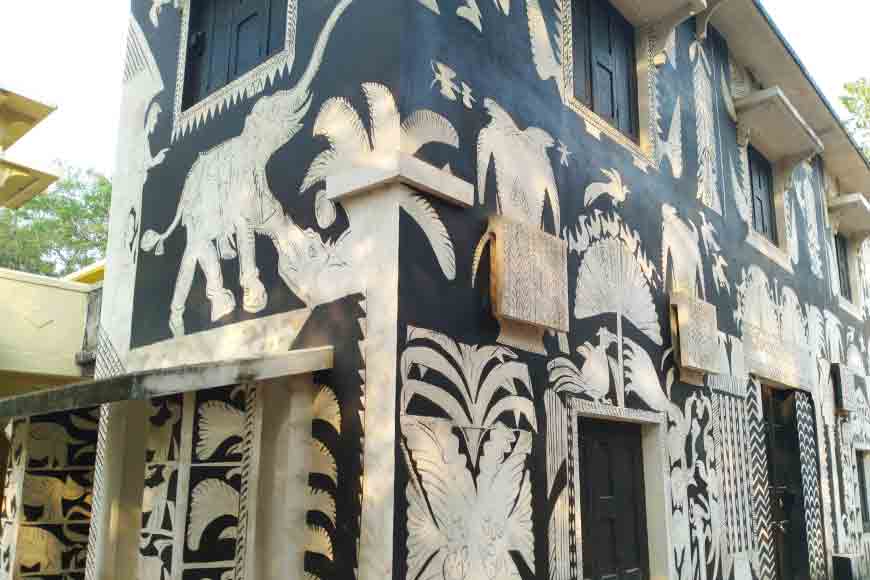
This is where the huge horizon acts like a canvas with statues and murals of international acclaim rising before your eyes. As one steps inside the Kala Bhavan campus of Santiniketan, one comes across stupendous murals, at times unique sculptures lying around. The place has a century-long history. In 1919, two years before Rabindranath Tagore founded Visva-Bharati, the university that was supposed to bring the world closer to India, he set up Kala Bhavan.
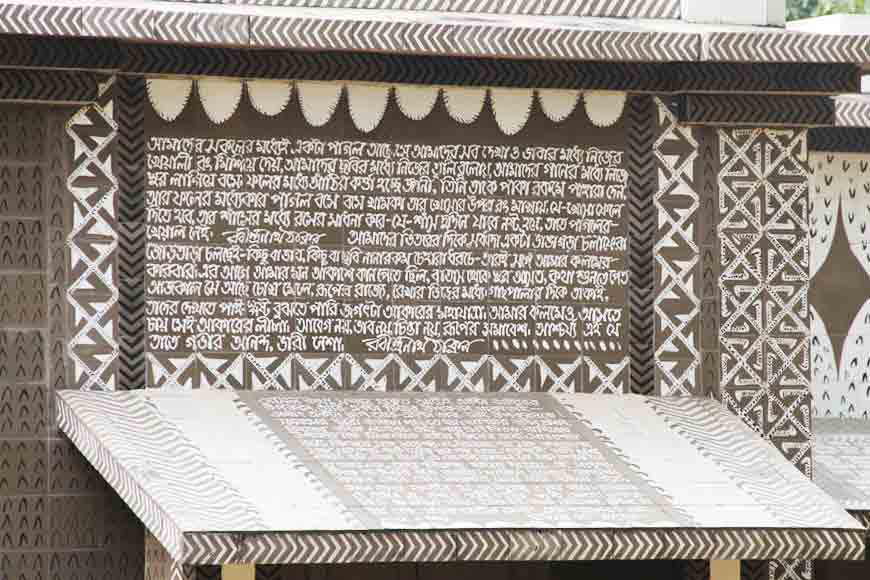
Tagore’s vision for Kala Bhavana was ambitious. The art school was not just to train a new generation in the best traditions of art-making, but he wished to bring a sense of community feeling binding artisans and their creativity through a common chord. All students were made to participate in the daily life of the ashram. From pottery to weaving to agriculture, they were involved in spheres of activity that went far beyond their particular choice of art education.
The vision of Kala Bhavan was so enriching that in last hundred years, the place has been graced by faculty from across India and the world. From Nandalal Bose, Ramkinkar Baij and Benode Behari Mukherjee, to eminent artists like Sarbari Roy Chowdhury, Somnath Hore, K.G. Subramanyan, all have contributed largely to the making of Kala Bhavan over a century. Even international scholars and artists made their way struck by this global vision. As early as 1922, Tagore invited the Viennese art historian, curator and Indologist Stella Kramrisch to teach here. She lectured on movements in art that were sweeping the West. In 1939, Xu Beihong, a well-known painter from China, brought in influences from the Far East. Tagore also got Narasingh Lal, an expert in the fresco style of Jaipur, to teach at Kala Bhavana twice, in 1927-28 and 1933.
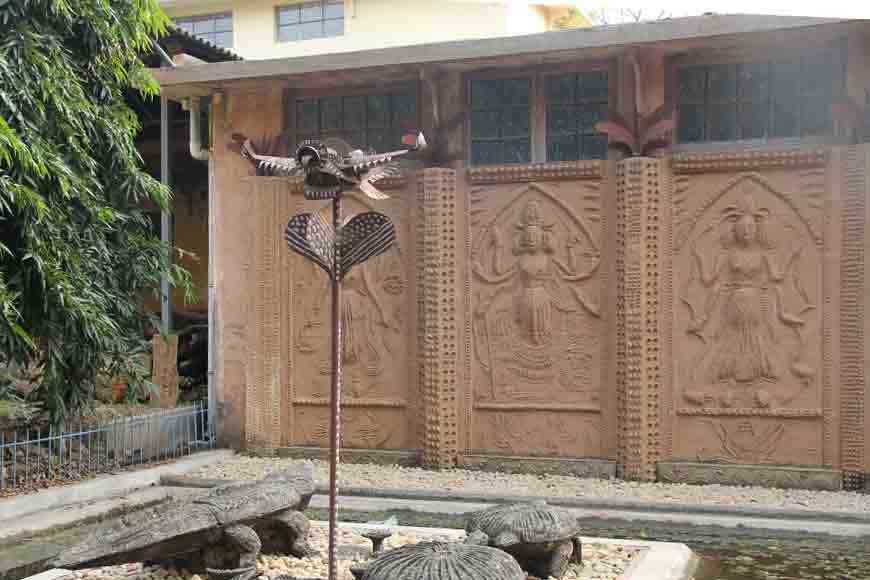
Creations of all these artists are still very much a part of Kala Bhavan. One such is etched as a black and white painting depicting the tale of Ramayana on one wall and that of Durga on the other, another comparatively new building dedicated to Nandalal Bose with exquisite alpona and inscriptions and a third one of Ganga Yamuna Saraswati. Incidentally, these three outstanding installations, have a common bond, that of pluralism, compassion and undoubtedly innovation. These three values and much more were shared by the creator of these murals, Kalpathi Ganapathi Subramanyan or K.G. Subramanyan, who was not just a student of Visva Bharati, but also a teacher at some point of time and definitely a world-renowned artist.
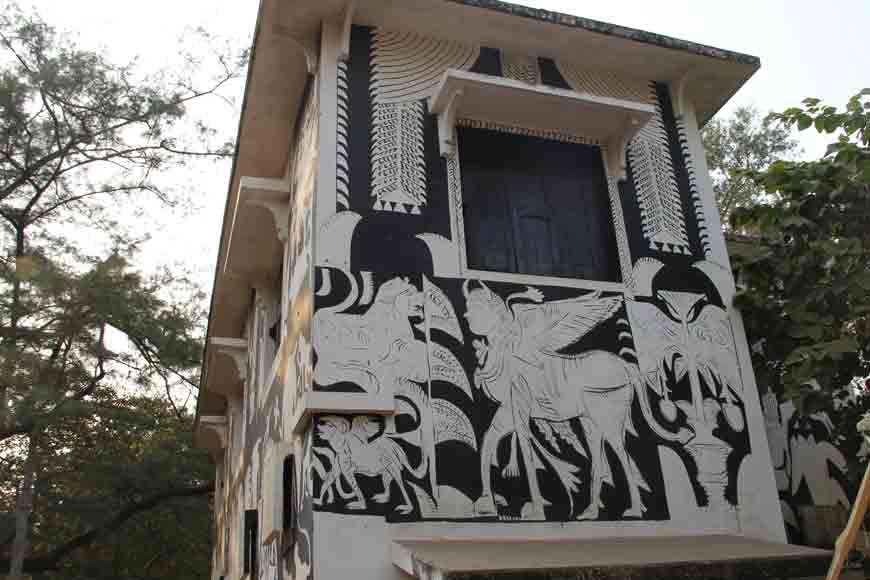
Popularly known as Mani Da by ashramites, Subramanyan’s spectrum of art was versatile – it is known how he made the smallest of toys in wood or even effortlessly installed large murals and painted huge canvases with passion and expertise. His every bit of imaginative fervor is reflected on the entire façade of Kala Bhavan’s painting department building in black and white. The outermost surface of the wall was removed to make way for fresh plaster that was treated to create the right kind of surface. This installation of 2009, faded due to exposure to polluting elements. However, in 2011, Subramanyan repainted the entire surface again. He just loved doing that instead of taking into account the days he spent in creating the first one and lamenting its loss. Even today one can witness that grand magic in black and white. The entire front wall depicts the story of Ramayana, while the back wall has the mural of Devi Durga in a peaceful mood. She has no weapons on display.
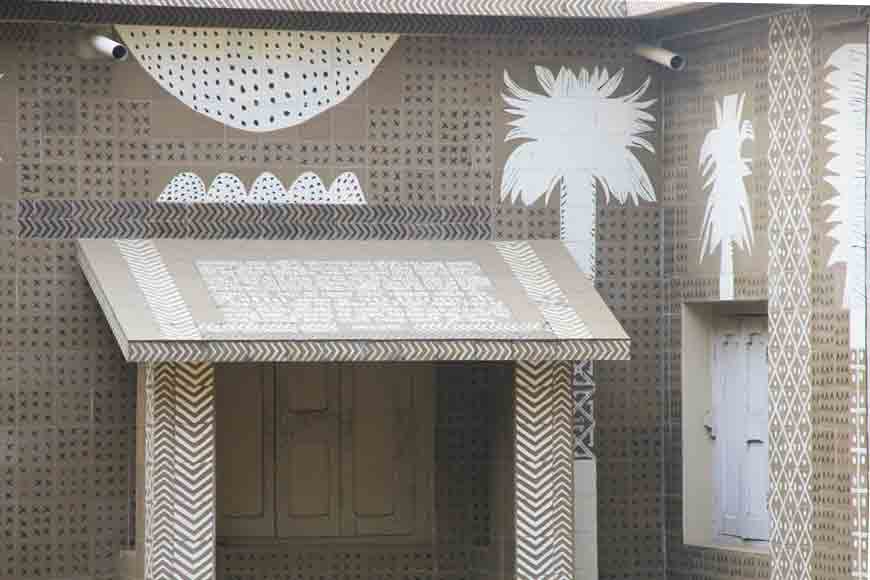
The mural reflects the dynamism of the artist. The other major mural as one enters the Kala Bhavan campus was made in 2011, by Subramanyan as a tribute to his guru, Nandalal Bose. He covered the whole exterior of his studio with ceramic tiles. When he made this mural, he was almost 88 years old, yet full of energy. The tiles used are all of earth-colour and hence it looks more like a mud building that goes so well with the ethos of the rustic charm of Santiniketan, along with Nandalal Bose’s words etched on the walls. This serves as the Art History department today and has a slice of Japan attached to it.
Visitors from far and near still enrich and amplify the global appeal of the Kala Bhavana just like their students and teachers do.










